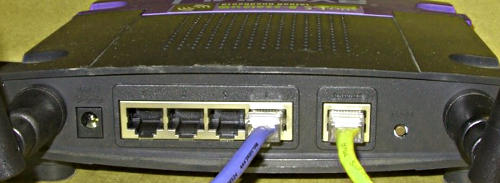Future of TV is about, well, the future of television not only in America, but the world. It is changing in a big way.
As an Architect of custom houses nationwide, this architectural firm watches technological improvements and incorporates them into their designs. One of these is the latest television and video in residences.
A long time ago, in the 1950s, it was wire “rabbit ears” on top of the TV (cathode ray tube) in the living room, black and white. In the mid 1960s, color finally came and larger outdoor mast antennae. Things pretty much remained the same for several decades. Then in the 1970s cable TV came into many rural and urban areas via a hard wire hooked up to a central receiving station (actually cable began back in the 1940s and 50s in remote mountain areas, but was not widely dispersed until much later).
Satellite TV actually began in 1962 via the Telstar satellite, but wasn’t widely known until the late 1970s and 1980s and has expanded ever since as the main high quality standard of TV reception and programming in many residences throughout the USA and abroad.
Here we now are in 2016. There’s a new mode of TV and digital movie and digital video distribution that is well on its way to replacing both the old cable and satellite systems: INTERNET TV. This appears to have started about 5 years ago and is gathering inertia.
What is it? Internet TV is what it sounds like: complete television and movie and really any kind of video experience you might want, delievered through a high speed fiberoptic or telephone wire into your house to a modem and then via a category 6 wire or wirelessly to a reception device connected to your TV’s HDMI connector (typically). TVs of course are all flat screen these days and many of them are much larger than in the past and much higher resolution: 1080p being a mainstream HD (High Definition) today (which is really 1,920p x 1080p), but 4K is now available and new content is being created and the handwriting in on the wall: 4k (4,096) will no doubt become the new UHD (Ultra High Definition) standard soon (and probably already is). And we’ve heard that 8k are in the experimental stage.
The people who are quitting their satellite service and going to Internet TV are called “cord cutters” although that’s really a misnomer, because you will have a cord, just of a different type/source.
The main characteristic regarding wiring for Internet TV in a house is to indicate a high speed fiberoptic or telephone wire coming to the telephone box of the house, then to lead with a Cat6 (Category 6) wire to a central location where a quality modem is located and then from there, have Cat6 wires lead to various main locations where TVs and computers might be located and also realize that wireless will probably work, but hard-wired will always be better.
So what’s the big deal about Internet TV? Selection and content availability for one: you will have greater access to more programs and more movies and other informative videos than just about any other source. COST is another. Many people are presently paying in excess of $100 a month for their satellite TV package. Nearly the same access on Internet TV will cost around $40 a month. That’s a big difference to many households who want more bang for their buck.
There’s a problem though, right now for local channels: it is hard to find a service that provide ABC, CBS and NBC. Information indicates that you should obtain an HD antenna to receive those channels, which will probably work in urban locations, but not always in remote settings. CBS presently offers and “All Access” package to allow you to gain access to most of their programming, but as of this date, not the other two major broadcasters. Perhaps that will change in time. Surely they understand the tsunami of technology regarding Internet TV and how they better be riding it to survive.
Until something new comes along to replace it, it appears that Internet TV is solidly fixed for the immediate future and the satellite companies realize it. Sling TV is actually an Internet TV provider that is owned by DISH. Which is a brilliant move on their part, as they begin to see attrition from their satellite offerings.
Roku is a provider of a small device that is sold by Best Buy and other technology outlets. It and similar devices by other companies provide access to Internet TV signals, along with a range of choices built-in as well as access to Sling TV (if you subscribe to that). Sling is one of the few current providers that give access to a healthy bundle of choices of various formerly cable channels that nicely replaces DISH and Direct TV offerings, including HBO, which can also be had directly through your Roku to HBO. The other thing about Internet TV: no contracts. You can stop and start at will, giving a credit card. You can add optional access to Netflix and other offerings as you wish, and add and remove them when you want to do so.

